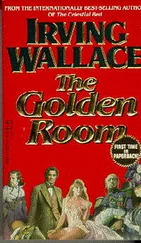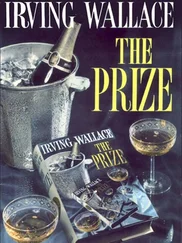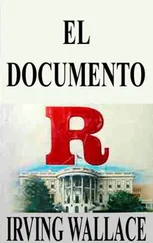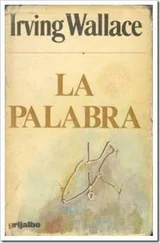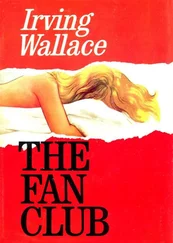Flannery darted forward to grasp his hand. “Welcome home, Mr. President,” he said.
“This isn’t much pleasure to me, Tim,” Dilman said, “considering the circumstances.”
“No,” Flannery agreed. Then he was all business. “Mr. President, I’ve allowed three from the press pool to grab a few pictures of you.” He turned, waving. “Go ahead, boys.”
As the limousine rolled away, leaving Dilman stiffly posed against the backdrop of the south lawn and the Washington Monument, the photographers hustled toward him, crouching, clicking. Dilman nodded, unable to smile, and then he moved toward the canopy. The photographers went crabwise alongside him, shooting more pictures, as the onlookers, White House police, Secret Service agents, gardeners and yardmen parted to give him passage.
He was halfway under the canopy when a medium-sized Negro with tight curly white-cotton hair that matched his white bow tie, with jet-black solemn face that matched his immaculate dark suit, stepped forward.
“Mr. President,” he said, “I am Beecher, the late President’s valet.”
Dilman stopped and extended his hand. Hesitantly the valet shook it.
“I’m glad to see you again, Beecher. I remember you from the Congressional receptions I attended here.” He paused, and then added, “I don’t know what your plans are, but I’d be pleased if you stayed on, that is, if you’d like to work for me.”
For the first time a smile wrinkled the valet’s bland face. “Thank you, Mr. President. I would like nothing better.” He indicated the south entrance. “Many of the White House staff are in the Diplomatic Reception Room, waiting to welcome you. After you’ve met them, I’ll escort you to your apartment on the second floor.”
“Very well,” said Dilman.
The valet leaped ahead to open the door, and Dilman went through it into the Diplomatic Reception Room. Inside the door, he hesitated. At least one hundred persons lined the vast and stately circular room with its eighteenth-century furnishings. There were women in domestic white or blue uniforms, many wearing aprons, and several dressed in crisp daytime secretarial suits or blouses and skirts. There were men in overalls, in fatigues, in dark suits with black ties. They were everywhere, aligned against the ornately framed oils of many First Ladies-he recognized the likenesses of Dolley Madison and Jacqueline Kennedy-and they waited along the cupboards of gold-edged plates, amid the scattering of yellow-upholstered furniture, against the scenic wallpaper depicting Niagara Falls and New York Bay.
“This is part of the White House day staff,” the valet whispered to Dilman.
All eyes were upon Dilman, curious eyes, speculating eyes. Slowly Dilman crossed the oval carpet, until he had progressed to the middle of the Reception Room.
He cleared his throat. “I do not have time to meet you individually right now and shake your hands, but I am touched by this turnout. I would like you to do this for me-I don’t think it will take very long-but I’d like each of you, starting from the door, to raise your hand and give me your name and job title. I would appreciate that.”
He turned to his left, toward those nearest the entrance and before the glassed cupboard, and as each one lifted a hand, some tentatively, some high and assured, each announced his name and position in the White House. While the roll call went around the room, Dilman murmured an acknowledgment of each one’s identity. He was astonished by the diversity of personnel. He had read or heard that there were 132 rooms in this house to be looked after, and that thirty-eight policemen guarded its many passageways, entrances, exits, and that four thousand persons possessed full-time or semipermanent security passes to service the Executive Mansion from within or without.
Yet Dilman had never expected anything as overwhelming as this. The men and women identifying themselves included police, chefs, kitchen help, chambermaids, butlers, carpenters, air-conditioning specialists, launderers, electricians, maintenance engineers, house painters, floor boys, telegraphers. Some were more important than others, Dilman knew, but he gave them no warmer recognition. Among the important ones were the housekeeper, Mrs. Crail, and the members of the Social Bureau from the East Wing, T. C. and Hesper’s social secretary, Miss Laurel, with her twelve assistants that included two secretaries.
It had taken longer than Dilman had anticipated, a full fifteen minutes, and when the last to introduce himself, the wispy chief calligrapher-who wrote all White House invitations, place cards, seating charts by hand-had finished, Dilman cleared his throat a second time.
“Thank you, each of you. It is a pleasure to meet you,” he said. “Some of you, I know, have become indispensable to the operation of this nation’s first house. Some of you have served Presidents as far back as Herbert Hoover and Franklin Roosevelt, and others of you have been here under Mr. Truman, General Eisenhower, Mr. Kennedy, Mr. Lyndon Johnson, and The Judge. But all of you, I know, old and new, have served T. C. and the First Lady efficiently and loyally. Some of you, missing them, having other plans, may wish to leave for different employment. You may do so, of course, and I will understand your motives. Most of you, I hope, I trust, will stay on, knowing your-your loyalty is to a high office and not to any individual. If you will stay on, this is simply to tell you that I want you and depend upon you. I can’t promise life in this house will be as it has been. No one can replace T. C. But the life of the house itself, the routine, the service to those who come here, must remain unchanged.”
He paused, blinking at the cream-colored carpet, and then he said with the faintest smile, “Perhaps, even, your work will be easier now. You see, except for my son, who is away at college, I am alone, quite alone, a widower, and I have few friends and little interest in social affairs except those which are expected of me. Yes, my personal demands may make it easier, but remember that this White House is not only my house but your house, too, and I want you to continue to take pride in it and in your jobs. I hope you will stay. I hope to know each of you better in a short time. Thank you-thank you very much.”
The valet, Beecher, was at Dilman’s side, and from the crowd of personnel, the Chief of the Secret Service, Hugo Gaynor, and T. C.’s military attaché, Brigadier General Robert Faber, swiftly emerged to join him. There was a light spatter of applause as General Faber, Chief Gaynor, and Beecher led him straight ahead, out of the Reception Room, into the wide ground-floor corridor with its seemingly endless ribbon of red carpet.
“Excellent, Mr. President,” the buoyant military attaché was saying. “I’m certain they will be eager to serve you.” He guided Dilman to the left. As they started up the corridor, Chief Gaynor said, “Over there is where you will come in from your office every day. Next to it is the service entrance for employees and tradespeople.” He pointed ahead. “Miss Crail’s office, she’s the housekeeper, a demon, and next to her, Admiral Oates’s office, he’s the White House physician, and across the way the flower shop-they keep the old house decorated-and those doors open to the main kitchen, all electric and stainless steel. It has a dumbwaiter that runs up to a pantry on the first floor, and to your private pantry or kitchenette on the second floor. Ike put the second-floor pantry in-liked late snacks and raiding the refrigerator.” General Faber and Chief Gaynor threw half salutes at a plainclothes agent and a police guard seated at a table in the corridor, as both leaped to their feet and returned the greeting.
“Here we are,” said Chief Gaynor. He swung off the red carpet, passed under an arch into a small vestibule. “Here is your private elevator, Mr. President. Takes you straight up to your second-floor apartment every day.” He pushed the button, and Dilman watched the floor lights on the wall indicator drop from 3 to 2M to 2 to 1M to 1 to G. The valet opened the elevator door and held it.
Читать дальше


